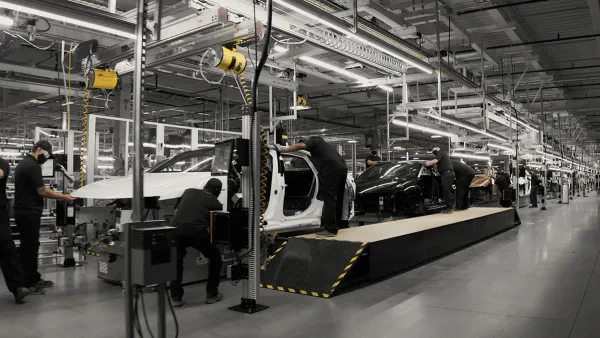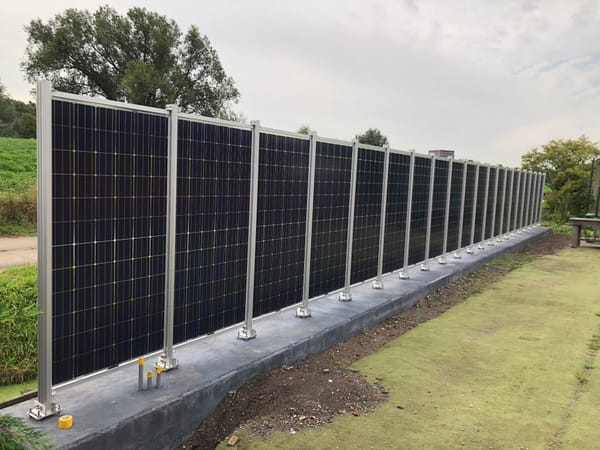The necessary persistence when building a green tech supply chain

As an American boy growing up in the 1980’s, I was obsessed with Soviet technology. It seemed to me a strange, bizarro world compared to the tech we had in the US. Their phones were large and clunky, as were their cars and personal computers. I was a computer nerd, and managed to build my own PC by the age of 12, in 1985. Around that time I saw a television news report on Eastern Bloc coders, who worked with machines clearly less advanced than the one in my bedroom. This pampered Westerner could hardly believe they got anything done at all.
Now, it seems as if the West is headed in the direction of the old Soviets with battery and green tech. The US is on the losing side of the tech race this time, and whereas the Soviets lagged with their tech due to a lack of entrepreneurial muscle, the US and Western countries are lagging in green tech because they lack China’s persistent industrial direction.
The world’s green tech supply chain stands on four legs: raw minerals, refining, technological prowess, and manufacturing capacity.
The raw materials for green generation and EV batteries, such as nickel, cobalt, lithium, copper, manganese, and graphite, are typically found deep in the earth, and usually not in geographies controlled by Western countries. When found, it can take a decade to prove a mine and then get it working. Once operating the mines can be ecological disasters, and are often in difficult to reach places, like southern Congo, so years more are spent building rail and truck lines to get the minerals out.
Next, building refining capacity can also take years of permitting and construction and the processes often require use of acids and other toxic chemicals.
Manufacturing is probably the most straightforward part of the EV revolution – at least for Western countries. It requires a highly trained workforce, but like most complex manufacturing processes, it’s the sort of thing you only get better at as you do more of it. And that goes double for green tech and battery development. The more batteries and turbines you build, the more your engineers and scientists can iterate.
Chinese companies are leaders in all of these areas. Battery and green tech design, as well as manufacturing. Also, for over a decade Chinese companies have been investing in the extraction and refining of minerals needed for green tech (as discussed here last week), to the extent where Chinese-owned companies almost totally dominate mineral supply, and the American establishment is calling it a “national security” threat.
To catch up in the green tech race, the US and Western countries will need to do more than just invest in manufacturing and design, they will need to commit to a decade of building a supply chain, slashing permitting, and fully committing to a green tech revolution. Moving from the fossil fuel supply chain to green tech will be like the last industrial revolution a hundred years ago when we rid ourselves of ferriers and saddle makers and built the first automotive assembly lines.
But while the US Inflation Reduction Act and the EU’s Green Deal are promising starts, currently half of the US and European political establishments are calling for increased fossil fuel use, endangering the long-term persistence needed to develop access to minerals and manufacturing prowess. As a result, this year’s elections will likely determine whether China retains its dominance in green tech, and if the West will be relegated to using a green version of 1980’s Soviet technology.
Ideas
An excellent explainer of carbon offsets, including details on rating agencies and registry databases.
Another good explainer, this one on challenges to the US grid mounted by renewable power generation.
What if Chinese EVs (which are basically computers on wheels) are controlled by the Chinese government, and could be used for video monitoring or remote control during a crisis? In other words, what if Chinese EVs are a Trojan horse national security threat? Last week Pres. Joe Biden took a step towards banning Chinese EV sales in the US, following the same path as with banning Huawei’s cell tower technology. Regardless of whether it is true or not, the dual facts that China dominates EV battery production and that its tech is considered untrustworthy in much of the world are becoming barriers to global electrification.
Proposals on solar radiation management (SRM) were sidelined by a UN environment panel last week. SRM includes any number of solutions to temporarily cool the atmosphere, from injecting sodium-dioxide (SO2) into the atmosphere to building a giant solar shade in high earth orbit. Some countries, mostly low carbon emitting countries, view SRM as a way for high emitting countries to delay cutting their emissions, and thus oppose the concept outright.
Parts of the Northern US have experienced a record warm and dry winter this year, and now industries dependent on winter tourism are crashing. As a native Chicagoan, I worry if this year signals the end of winter, changing the definition of who we are: people who live with a cold that defines our hardiness.
Heat pumps may have become politicized in Europe, but in the US northeast state of Maine, many homes are remote and depending on heating oil, which has to be delivered by truck and has somewhat volatile pricing. For these consumers, heat pumps are too good a deal to pass up. Meanwhile, massive federal rebates for heat pumps and other electric appliances are finally starting to kick in. It will be interesting to see how much cash can cut through political rhetoric.
Like what you see? Please forward to a colleague.
Climate Politics News
Renewable Growth in India Expected to Fall Short of Modi Target [Bloomberg]
India’s Coal Stocks Soar to Seasonal Record [OilPrice.com]
Spanish Power Is Almost Free With Renewables Set for Record [Bloomberg]
Global energy-related CO2 emissions hit record high in 2023 - IEA [Reuters]
Spring came early: February likely warmest on record amid climate change [Reuters]
Important Upcoming Dates
Loss & Damage Meeting – Mar. 12-15 – Bonn
Copenhagen Climate Ministerial – March 21-22
World Bank/ IMF Spring Meetings – Apr. 19-21 – Washington, D.C.
G7 Climate and Energy Ministerial – Apr. 28-30 – Torino, Italy
Article 6.4 Supervisory Body Meeting (carbon credits) – Apr. 29-May 2 – Bonn
India Elections – Apr. & May
Mexico Elections - June 2
UNFCCC Sessional - June 3-13 – Bonn
EU Parliament Elections – June 6-9
Article 6.4 Supervisory Body Meeting – July 15-18 – Bonn
Article 6.4 Supervisory Body Meeting – Oct. 7-10 – Bonn
US Elections – Nov. 5
COP29 – Nov. 11-22 – Baku, Azerbaijan





